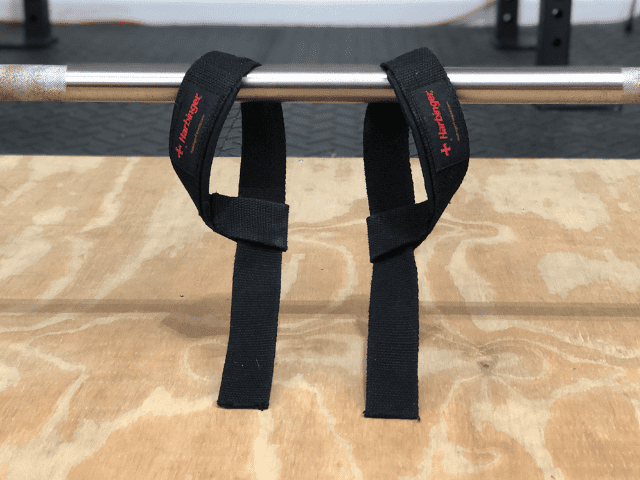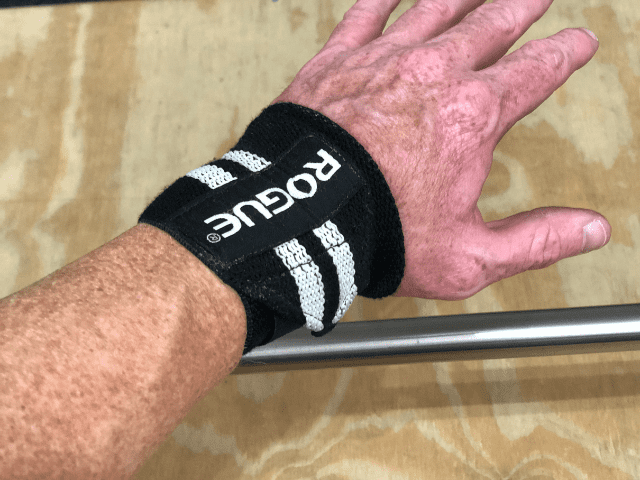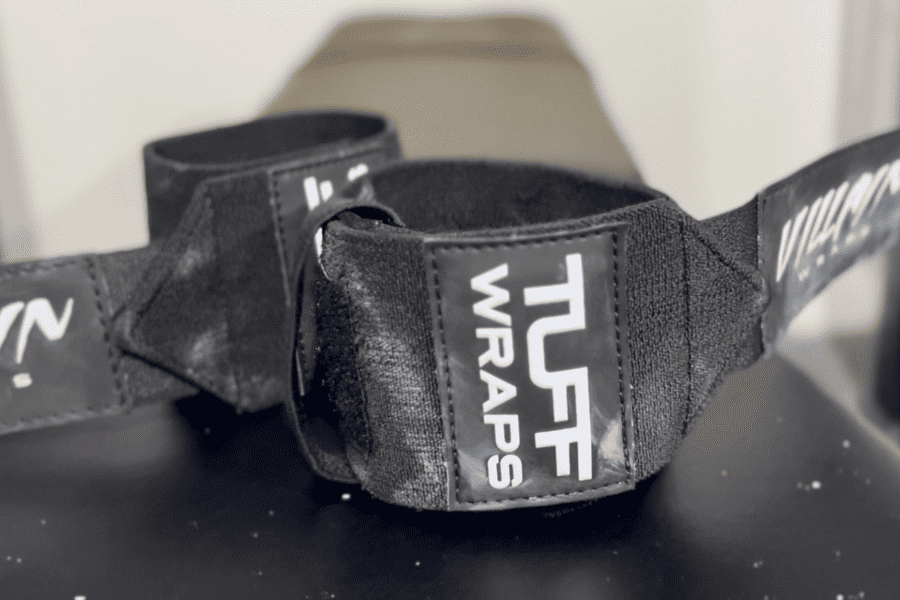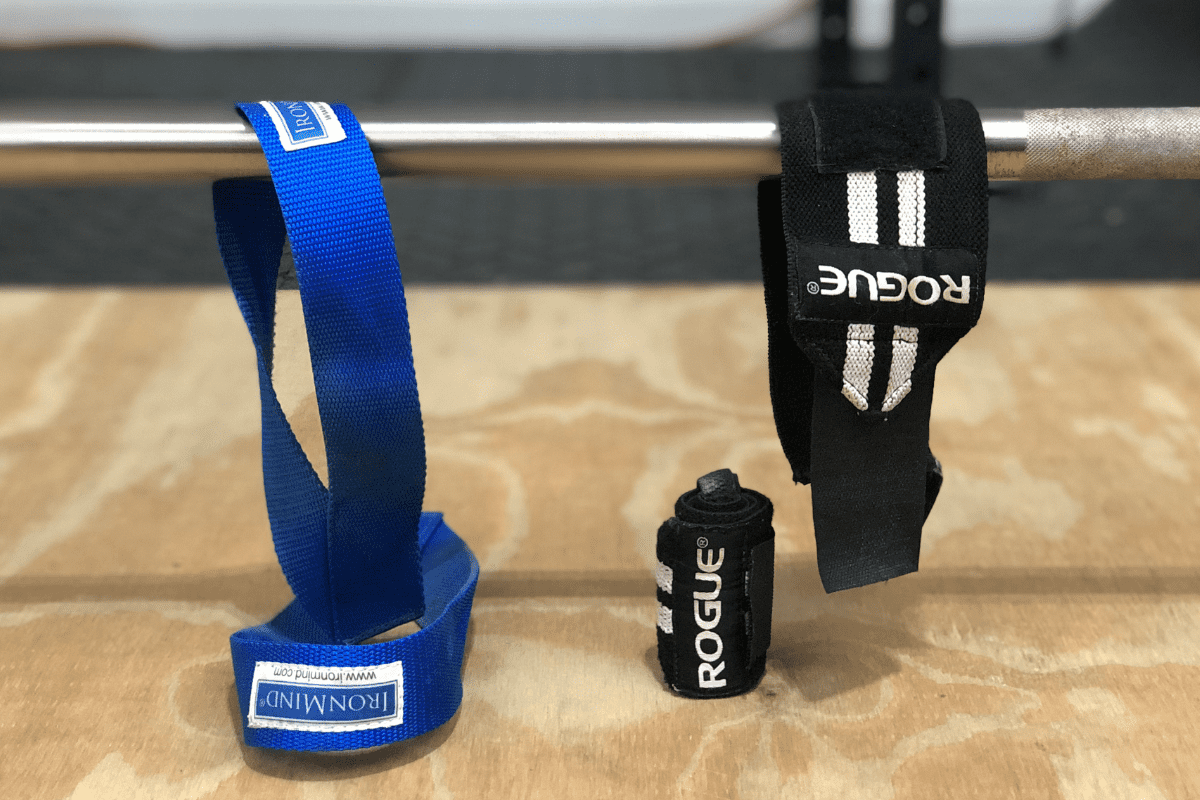Lifting Straps vs Wrist Wraps (What’s the Difference?)
For a new lifter (and to be honest, not just new lifters), figuring out the difference between lifting straps and wraps can be confusing.
First, they both sound about the same. Heck, they even rhyme.
What adds to this confusion is there seems to be A LOT of “information” on the internet that has no idea there is a difference between the two either.
Both lifting straps and wrist wraps involve lifting weights and they’re an accessory that is worn in the hand and wrist area. That’s about where the similarities end though.
I also believe that part of the issue is that many novice lifters are only familiar with one or the other and they’re not even aware the other exists so in their mind it’s just two different names for the same item.
So, what is the difference between lifting straps vs wrist wraps? What function do they provide and do you need one of the two or both?
The biggest difference between lifting straps and wrist wraps is that a lifting strap is designed to wrap around your wrist and the bar in an effort to increase your grip. A wrist wrap wraps around your wrist to help support the wrist for pressing movements, but doesn’t wrap around the bar.
Want more details on what both lifting straps and wrist wraps are, the pros and cons of wearing them and when you should use them? Read on.
This post contains affiliate links. If you use these links to buy something I may earn a commission. Thanks.
What are Lifting Straps?

Lifting straps are an accessory that is worn around your wrist that helps you stay attached to the bar during a lift.
The way a lifting strap works is that you hook the strap around the wrist joint and then wrap the strap around the bar. This helps connect you to the bar and keep the bar from ‘rolling’ out of the lifter’s hand, which is the natural tendency of the bar especially if you are using a pronated grip.
They work tremendously well for increasing the grip strength of a lifter. Obviously, this comes in handy for a variety of situations and lifts whether you’re an Olympic Lifter doing Snatches or a Powerlifter doing heavy deadlifts.
Straps allow you to lift heavier weight, particularly on lifts where grip can be a limiting factor.
They can also help save your hands from a lot of wear and tear from repeated pulling volume. By that I mean, if you have a lot of lifts on a particular day that is really going to stress your grip, straps will help take some of that stress and can help your hands from getting ripped open with calluses.
This is the primary reason why I personally use straps. On my high volume Olympic days, I may have Snatches, Cleans and Pulls all on the same day. My hands can end up shredded by the end of the lift. Weightlifting straps take away some of the grip stress and protects my hands.
Types of Lifting Straps
There are 4 different types of lifting strap: Open Loop, Closed Loop, Lasso and Figure 8.
Open Loop and Closed Loop Straps
Open Loop and Closed Loop straps are primarily worn for Olympic Weightlifting and many lifters refer to them specifically as Weightlifting straps. They’re generally shorter in length and therefore don’t wrap around the bar quite as much.
This is an important quality for Olympic weightlifters, because the ability to be able to bail quickly and ‘release’ from the bar is critically important when Cleaning and especially Snatching.
If a lifter misses a snatch behind the head and is not able to release their grip from the bar, it could lead to a devastating injury.
The difference between an Open Loop and Closed Loop strap is that a Closed Loop strap is basically exactly what it sounds like. It’s a strap that has been looped onto itself and then ‘closed’ by being sewn together to create a fixed, closed loop.
An open loop strap is essentially just a strap. The lifter is then required to loop the strap around the bar and close the loop themselves within their hand. These are really only used by advanced weightlifters who enjoy the added custom fit that an open loop strap can provide.
However, they can be really, really hard to get the hang of. I have a pair, but honestly have rarely ever used them because I also find them crazy hard to use. A closed loop strap is much easier to learn how to use and therefore tends to be way more popular.
Lasso Straps

Lasso straps are the most common type of strap and the one that most lifters are familiar with. They perform the same basic function as open and closed loop straps, help attach the lifter to the bar (and can also protect hands), but do so in a little bit of a different manner.
Lasso straps loop onto themselves, but then have an eyehole that the strap goes through. This creates a loop to go around the wrist joint and then the strap can be looped, sometimes multiple times, around the bar.
While this can create a more secure grip on the bar, you also lose some of the ability to release the bar as easily as with the weightlifting straps.
It is possible to use a Lasso strap for Weightlifting by just looping the strap around the bar once so it can still be released relatively easily, but in my opinion, if that’s what you want a strap for it’s better to go ahead and get a closed loop strap.
Lasso straps work great for bodybuilders, powerlifters and general recreational lifters.
Exercises like Deadlifts, Shrugs and really any type of rowing exercise like One-Arm Rows and Barbell Rows are all examples of lifts where a lasso strap can make a big difference.
Figure 8 Straps
Figure 8 straps are probably the least well-known variety of strap and are used primarily by powerlifters. Instead of creating just one loop, a figure 8 strap creates a double loop that is intended to give an even more secure grip to the bar.
I’m going to be honest – I’ve never used a figure 8 strap and actually just became aware of them somewhat recently.
Personally, I’ve never felt the need to have more gripping ability than what a lasso strap could provide, but the people who use figure 8 straps seem to really swear by them.
Which Type of Lifting Strap is the Best?

Which type of strap will work best for you depends heavily on your lifting style and then your personal preference. Olympic lifters will generally lean towards the open loop and closed loop straps while powerlifters and bodybuilders will usually go for the Lasso and Figure 8 straps.
Personally, I do quite a bit of Olympic lifting and bought and tested 6 of the best lifting straps used by my friends and other coaches who are all pretty hardcore lifters themselves.
The Sew Easy Straps from Iron Mind ended up being the pair I use the most now, but there were multiple pairs that I really liked.
Do Straps Make Your Grip Weaker?
The biggest question I get in regards to wearing straps is also potentially their biggest drawback if not used properly. And that is, does using straps end up making your grip weaker?
In my opinion, any lifting accessory that gives assistance for a lift, whether it’s lifting straps, a belt, bench shirt, etc. can end up being a detriment to your long-term strength progress if you become too reliant on it.
So, yes, using lifting straps all the time for every set of every lift will lead to you having a weak grip.
Aim to only use lifting straps for heavy lifts when you really need them. For instance, we have a rule in our weight room that straps are only allowed for shrugs when you get to 405 on the bar.
Not only does this help us continue to improve our grip strength with lighter weights, but getting to use straps for heavier lifts becomes a kind of badge of honor and something guys aspire to.
Coaching Tip: If you want to improve your grip strength without using straps, try using a mixed grip by placing one hand palm down on the bar and one hand palm up. Or better yet, learn how to use a hook grip.
What Are Wrist Wraps?

Wrist wraps are a lifting accessory worn around the wrist to help support the wrist, primarily when doing pressing movement. The most common place you’ll see wrist wraps being worn is for bench press.
Personally, I use wrist wraps for heavy pressing movements like bench press and shoulder press and sometimes for front squats.
Years of playing football and lifting weights have done a number on my wrists and wearing wrist wraps helps my wrists feel more secure and supported for heavy lifts.
Wrist wraps can also help if you have slight wrist pain from bench press or other pressing movements by keeping the wrist more stable and neutral.
Types of Wrist Wraps
There are really two main types of wrist wraps.
There’s not really a definitive name for each (at least not that I’m aware of) so I’m just going to refer to them as long wraps and short wraps.
Long wraps are generally used by more experienced lifters and involve a long piece of material usually made of some combination of elastic, nylon and cotton.
These wraps come in different lengths varying anywhere from 12″ all the way up to 36″. The sweet spot for most lifters is usually around 12″ to 20″.
They’ll have a thumb loop to help secure the wrap for the start of the wrapping process. Loop around the wrists a couple of times and then secure with Velcro. Most lifters will then release their thumb from the loophole once the strap is secured, but I’ve seen some leave it there. You do you.
Short wraps on the other hand are more Velcro intensive. They go around the wrist one time, loop through a plastic buckle and then are Velcro’d in place.
I generally see short wraps used by more beginner and/or recreational lifters mainly because they are way easier to use and much more beginner-friendly. That doesn’t make them bad though. My personal best on bench was done back in college with a pair of Grizzly Wrist Wraps which are of the short variety I’m speaking of.
Do Wrist Wraps Make Your Wrists Weaker?
You might have heard that you shouldn’t wear wrist wraps, because your wrists will become reliant on them and your wrists won’t naturally get stronger because they’re not being asked to work as hard.
I believe there is some truth to this, but I don’t think it means you should never wear wrist wraps.
There really is no difference between this and lifting straps making your grip weaker.
With any kind of lifting accessory, whether it’s knee wraps, a lifting belt or wrist wraps – it’s good practice to only use them when you need them as opposed to all the time just out of habit. In other words, don’t use them for your light sets and especially not for your entire workout.
However, when the weight starts to get heavy and a wrist wrap makes you feel more comfortable (even if it’s placebo!) then by all means, use them.
What’s the Best Wrist Wraps?

When I was in high school I was first introduced to “short” wrist wraps with a pair of Grizzly Wrist Wraps that I used primarily just to bench with. Most likely because I thought they looked cool more than anything else.
As I progressed in my lifting career I switched over to a pair of the longer wrist wraps and never went back.
Personally, I currently have a pair of Rogue Wrist Wraps and a pair of TUFF Wraps Villian Wraps. Both are great, but the TUFF Wraps are currently my go-to strap.
Inzer is another company that has been producing high-quality wrist wraps for decades and is a brand that I would also highly recommend.
Lifting Strap vs Wrist Wrap – Which One Do You Need?

This isn’t at all an ‘either or’ type of situation.
In fact, a serious lifter will generally carry both in their gym bag.
Both lifting straps and wrist wraps have their place depending on what you have planned for your workout that day.
Have a lot of pulling exercises? It probably makes sense to use a pair of lifting straps.
Have a lot of pressing exercises? Consider using wrist wraps.
At the end of the day, both are extremely inexpensive and will last you forever. A pair of lifting straps will cost you no more than $20 and a quality pair of wrist wraps is not much more than that.
If you have a garage gym, you’ll probably end up spending more money on a medicine ball than a pair of straps and wraps combined. They’ll also most likely last longer than the medicine ball too.

Get Shredded… For Free
Get a free workout Monday through Friday, posted right here on Horton Barbell. These workouts are designed to help you get strong, in shape and look great at the beach!
Final Thoughts
Having both a pair of lifting straps and wrist wraps in your gym bag is something I would highly recommend having.
Lifting straps to help keep your grip failing and to allow you to do more weight while also keeping your hands from getting ripped up.
Wrist wraps can help anyone that struggles with poor wrist stability and provide wrist support for pressing exercises.

